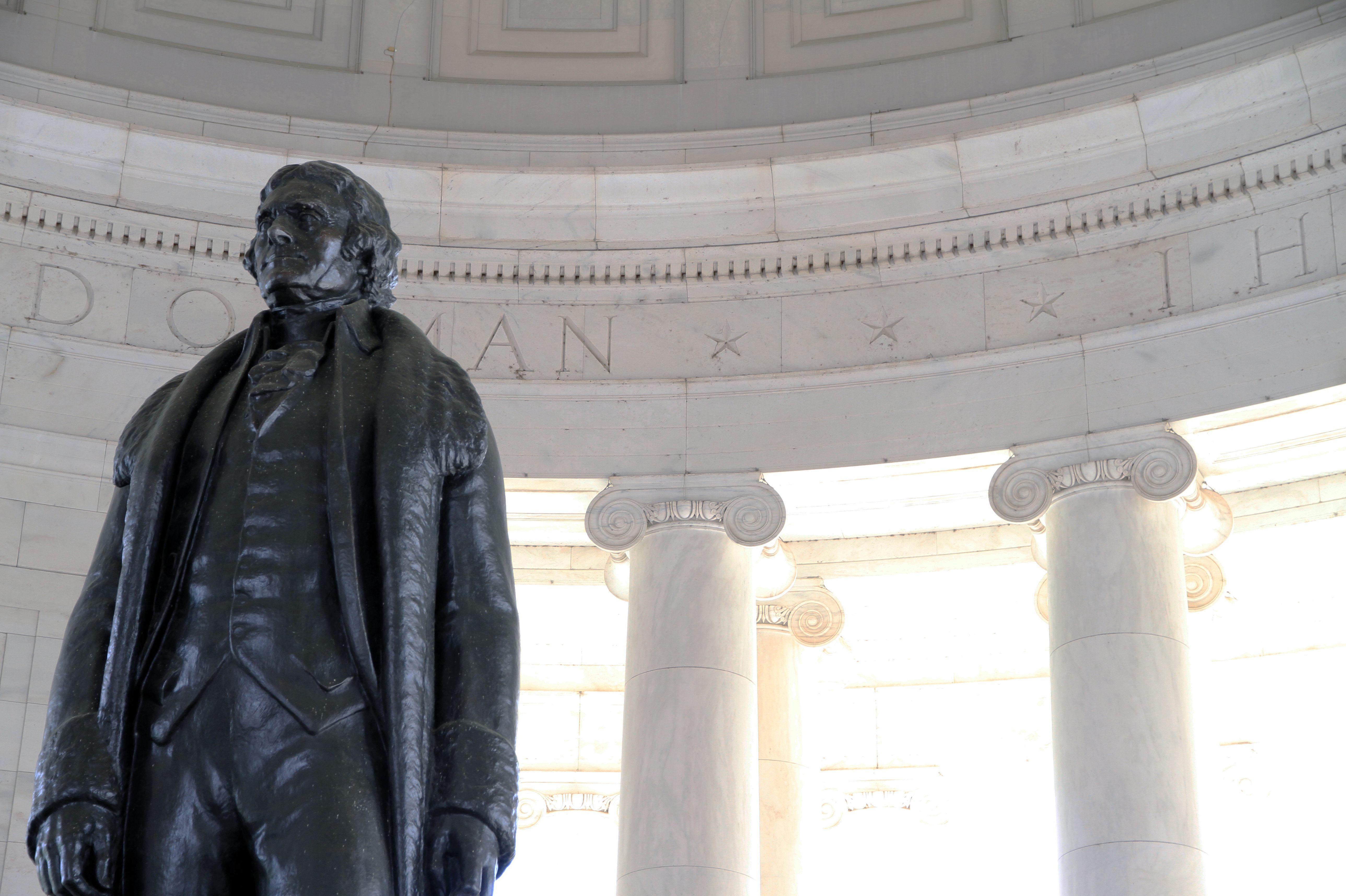How Do You Speak American? Mostly, Just Make Up Words
 John F. Kennedy knew how to speak American. (Image: NASA/Wikimedia)
John F. Kennedy knew how to speak American. (Image: NASA/Wikimedia)
Nearly a century ago, just after World War I had ended, there was a groundswell of linguistic patriotism in America. All of a sudden, scholars, writers and politicians were interested in studying, defining and promoting a distinctly “American” version of English.
In 1919, H.L. Mencken published the first edition of what would become one of his more popular books, The American Language. In the early 1920s, some of the country’s leading linguists started work on the “Linguistic Atlas of New England”, one of the first attempts to systematically document a regional dialect; in 1925, the journal American Speech published its first issue.
By 1922, Rep. Washington J. McCormick had introduced a bill to Congress proposing that the country’s “national and official language” be “declared to be the American language.” States followed suit, and while most of these bills failed, in 1923 Illinois actually did declare the state’s official language to be “American.”
But what is American, exactly? In every place that people speak English, whether it’s Scotland, Ireland, Australia, Ghana, South Africa, or Canada, the language has its own essential character, sometimes so distinct that people from one place can hardly understand people from another. In this mish-mash of Germanic and Latinate forms, what distinguishes the language that’s used in this country? How do you speak American?
English in America has always been different than the English spoken in the British metropole. In his 1992 book, A History of American English, the late linguist J.L. Dillard, who specialized in African American Vernacular English, demonstrates that the most originally American form of English was a pidgin, originating with sailor’s language. Early explorers of North America, he argues, would have used nautical pidgins and passed those on to native people. By the time the Pilgrims arrived in Massachusetts, there were people here—most famously the men the new arrivals called Samoset and Squanto—who already spoke a version of English that Puritans could understand.
But the English spoken by American settlers of European origin, too, quickly split off from the English spoken in Britain. At the beginning of the colonial period, America was a backwater. Not only was it distant from the cultural centers of Europe, it was far from the most happening place on this side of the Atlantic. So trends that surged in the language of London took longer to reach here, if they ever did.
It’s more correct to say, for instance, that people living in England developed a new accent than that Americans “lost” their British way of speaking. Not long after the Revolutionary War, it became common among British people to drop r sounds—“card” became “caahd”—while Americans held onto their r-pronouncing rhoticity.
It was around this time, too, that Americans first started feeling a little bit nativist about their English. As Mencken reports, in 1778, one political directive advised that “all replies or answers” to a minister of England should be “in the language of the United States.”
It’s not clear exactly what that meant. Only recently had English emerged as the dominant language in New York City, which had been a polyglot town for centuries, and where Dutch held on as a major form of communication through the mid-1700s. Pidgin English was widely used by native tribes to communicate with people of European origin. Enslaved people had brought with them a version of English from the nautical, slave-trading regions of West Africa, and that had been developing for centuries, too.
Presumably, the nascent American government didn’t intend to use any of these American Englishes in official communications. But already Americans had a reputation for using English more flexibly than British people.
Residents of the United States hung on to words that dropped out of British English: guess, gotten, cabin, junk, molasses. We also began using words lifted from native languages—maize, canoe. But, mostly, Americans would just make words up. Thomas Jefferson, who described himself as “a friend to neology,” created the word “belittle.” British writers despaired over it; he simply made up more.

Belittle this, Brits. (Photo: Ingfbruno/Wikimedia)
And ever since, speaking American has meant enjoying the use of a whole vocabulary that originated here. We have stolen words from other languages, massaged them into new words, turned nouns into verbs and verbs into nouns, and smushed two words together to make new ones.
For starters, just think about some words we borrowed from Dutch and decided to keep: boss, cookie, stoop, scow, sleigh, snoop, waffle, poppycock, pit, when used to describe the seed of a stone fruit. Dumb might be Dutch, or it might be German, or it might be a bit of both, but it’s a uniquely American bit of English.
There’s so much more. In his book, Mencken amasses piles of particularly American words: rubber-neck, rough-house, has-been, lame-duck, bust, bum, scary, classy, tasty, lengthy, alarmist, capitalize, propaganda, whitewash, panhandle, shyster, sleuth, sundae, alright, go-getter, he-man, goof. Only in America can you go upstate for the weekend. Here, we engineer, stump, hog, and squat on a piece of land. We’ve stolen loads from Spanish: corral, ranch, alfafa, mustang, canyon, poncho, plaza, tornados, patio, bonanza, vigilante, mosey, and buckaroo. Americans are very talented coiners of words—including of “talented,” another new one that sent British writers into spasms of horror.
“I could pile up differences until I not only convinced you that English and American are separate languages, but that when I speak my native tongue in its utmost purity an Englishman can’t understand me at all,” wrote Mark Twain. Walt Whitman celebrated the availability of “traitor, coward, liar, shyster, skulk, dough face, trickster, mean cuss, backslider, thief, impotent, lickspittle…I like limber, lasting, fierce words. I like them applied to myself — and I like them in newspapers, courts, debates, Congress.”
It was this type of brawny English that early 20th century legislators wanted to codify as American. “It was only when Cooper, Irving, Mark Twain, Whitman and O Henry dropped the Order of the Garter and began to write American that their wings of immortality sprouted,” wrote Representative McCormick, explaining his bill. “Let our writers drop their top-coats, spats, and swagger-sticks, and assume occasionally their buckskin, moccasins, and tomahawks.”
The difficulty is, this is more of an attitude towards language than a grammar, a phonetic habit, or a lexicon, and it’s hard to set into stone. Mencken identified three key characteristics of “American.” One was its “large capacity for taking in new words and phrases.” Another was its “general uniformity”—even within regional dialects, the English people spoke in one part of the country was intelligible to people living elsewhere. And third: “its impatient disregard for grammatical, syntactical and phonological rule and precedent.” That’s a hard set of standards to put down in law and require writers to follow.
Not long after the interest in American language swelled, too, the need to actively promote it dropped. In the 1920s, America’s version of English was exported overseas from Hollywood, as the first American movies started showing in British theaters, and the British press began bemoaning the infiltration of Americanisms into youthful brains. The talkies only made it worse. And by the 1950s, after World War II, American English took on the same sheen as the rest of American’s boom-era culture: it was cool.
“Think back to Franklin D. Roosevelt, and how he sounded,” says Mark Davies, a linguist at Brigham Young University.
“He’s not pronouncing his Rs,” says Davies. “That was cool, because it sounded British. Right after WWII, pronouncing your Rs becomes cool. Why is that? It’s because after World War II, we felt good about ourselves. We were powerful. All of sudden, we didn’t need to speak like the British any more.”
What does American sound like today? There are some hints from the corpora that Davies put together: his Corpus of Historical American English contains 400 million words, drawn from sources from 1890 through 2009; his Corpus of Contemporary American English contains 450 million words, from texts, including soap operas, created from 1990-2012. With corpora this big and carefully constructed to draw consistently from a mix of popular and academic sources, linguists can look more carefully at how grammar and usage change over time. For instance, one hundred years ago, Americans would have said: “Have you any time?” “It’s very British, very old fashioned,” says Davies. Now, we would say: “Do you have any time?” We also might say: “You’re going to end up paying way too much for that book.” You’re going to end up—that construction wasn’t around 100 years ago.
Ultimately, though, these sorts of details aren’t a good guide for how to speak America. “It doesn’t have to do with purely linguistic issues,” says Davies. “It has to do with how we feel about the language, and how we use it.”
With that in mind, here are a couple of loose guidelines for how to speak American.
Be flexible. Have fun. If Thomas Jefferson can make up words, so can you. And aim to live up to Walt Whitman’s prediction: ”The Americans…are going to be the most fluent and melodious voiced people in the world — and the most perfect users of words.”
















Follow us on Twitter to get the latest on the world's hidden wonders.
Like us on Facebook to get the latest on the world's hidden wonders.
Follow us on Twitter Like us on Facebook